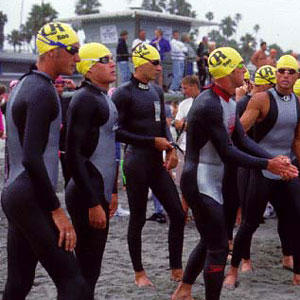Stakeholders

I’m going to tell you today, now, here, what others won’t. Triathlon as an industry, company by company, has been flat or declining in the U.S. for the past 2 years, maybe 3 years. How do I know this? Because I routinely poll you, our readers, as well as the retailers you buy from and the race directors whose events you enter. If anyone tells you triathlon in the U.S. is on a growth curve since 2011 I’d like to see that person’s data.
Does this mean there are fewer races? Maybe, maybe not. Depends on the area. Triathlon is certainly growing, by heaps, in regions around the world. If you live in Sweden or in the Phillipines triathlon is skyrocketing. But in the U.S.? No.
What I’m talking about is the aggregate number of race “occurrences” and by that I mean the number of discrete organic unit dives into the water at the crack of a gun or the blow of an air horn.
Does this mean there are fewer triathletes? I don’t think so. I think we’ve reached a place where we’re an actual, sizable, definable lifestyle sport. Me, for example, I swim, bike and run, regularly, routinely, but have not raced in a couple of years. Triathlon is my lifestyle, for keeps. But I take entire seasons off from racing. I actually do intend to race a tri season this year. But I don’t have to race to call myself a triathlete anymore than I have to compete in a rodeo in order to call myself a horseman.
Our industry is suffering because a lot of people wanted in on it just at the time the consumer market was leveling. We have too many companies trying to sell wetsuits to too few people; too many retail stores trying to get a slice of that tri market; too many race organizations putting on too many races for the number of available registrants. I’m not arguing against competition, rather we’re in a cycle right now where there’ll be some winnowing out and while that happens everybody’s going to suffer. The headwind is stiff.
I spoke to the owner of a respected tri store in Minnesota a few days ago. That state had, maybe, generously, a half-dozen triathlons in 1996. Now it has that many triathlons on one weekend. Our sport can’t sustain that many races. Minnesotans need more triathlon opportunities than six a year, but fewer than six a week.
Does this worry me? A little. Not much. I raced my first swim-bike-run event in 1980, raced my first Ironman in Kona in 1981, the first year the Ironman was staged in that town. I have seen the entire arc of the sport. Our initial run-up occurred during the decade of the 1980s. But the ‘90s were horrible for triathlon. Not long before the turn of the century annual members of USA Triathlon hovered around 17,000. As noted, entire states – big triathlon states – like Minnesota and Michigan had annual “seasons” that contained maybe a half-dozen races statewide. It was grim. Bleak. Cavernous. You could hear the echo inside the walls of our sport.
And then we started growing again. I don’t know why. Except to say that triathlon is just a primary, primal activity that speaks to the DNA of those who need accomplishment and adventure in their lives. You can’t keep a good sport down.
But this sport exhales every once in awhile, and it seems to have an inverse relationship to mountain biking. Whenever we grow, MTB exhales, and vice versa. We’re exhaling now. We’ll inhale later. How much later? Next year. Or in 2018. I don’t know. The winners in this industry will be those who are positioned correctly when we are ready to take off yet again, for the third time. This is what happened to Cervelo. It was the right company, with the right product, at the right time, once the sport took off again on or about the year 2000. The losers will be the congenital losers: those companies that are in and out, in and out, of triathlon, like day traders. This is why Nike, Adidas and Reebok are not a big companies in triathlon but Saucony is. Nike doesn’t sink roots in this sport; Saucony has never left this sport.
To be sure, triathlon is not small. We’re a lot, lot bigger than we were in 1990, when we took our first sportwide header. Today annual memberships in USA Triathlon are comfortably into the six figures. Still, we should consider where we are now and what we can and should do. We have tools at our disposal we did not have 25 years ago.
Most notably, we have a well developed nationwide network of stakeholders, and the means for them to leverage their assets one for another. I know with precision about this network because we (who run Slowtwitch, me in particular) are old fossils, we know everybody, and we've got a big fat Rolodex of everybody in every town. I’m talking about all the coaches, the tri clubs, the retail stores and race directors, in metro Atlanta, Dallas, New York City and all around the country. We need, in my opinion, an all-hands-on-deck response so that we make sure everybody in an area knows who is in his or her foxhole.
Earlier this morning I wrote a news update on TriColumbia. This historic organization has served as a model for regional triathlon boosterism and execution. It is in trouble. Much of its trouble is self-inflicted. But, some of the trouble is just a perfect storm of bad execution combined with encroaching competition and a flattening market. Are the Columbia Triathlon, and Ironman Eagleman 70.3, and its IronGirl races, and Chesapeakeman, worth saving? I don’t know. But I do know who the local stakeholders are. I know the clubs, the retailers, the coaches. I’m going to be reaching out. Maybe it’s too late to “save” the Columbia Triathlon but I just ponder the fact that a May race that, two years ago, sold out at 2,500 now has just under 1,000 registrants. Could the local retailers have aided this event’s numbers by pinging their own email lists, reminding them to sign up? Could the race organization have emailed to its lists reminding its registrants to go in to these retail stores when these stores have special events or sales or targeted demos?
In sum, has each region’s local stakeholders girded their loins and done more to help each other than the typical stuff they do every year? My guess is, yes occasionally, no in the main. I don’t blame all these stakeholders, because they have not been mobilized. We intend to mobilize them.


